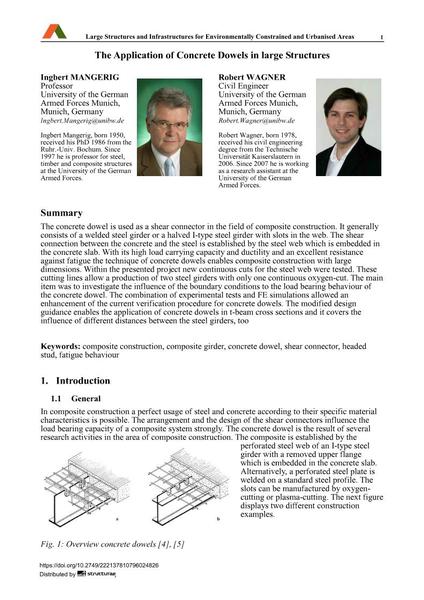The Application of Concrete Dowels in large Structures

|
|
|||||||||||
Bibliographic Details
| Author(s): |
Ingbert Mangerig
Robert Wagner |
||||
|---|---|---|---|---|---|
| Medium: | conference paper | ||||
| Language(s): | English | ||||
| Conference: | IABSE Symposium: Large Structures and Infrastructures for Environmentally Constrained and Urbanised Areas, Venice, Italy, 22-24 September 2010 | ||||
| Published in: | IABSE Symposium Venice 2010 | ||||
|
|||||
| Page(s): | 330-331 | ||||
| Total no. of pages: | 7 | ||||
| Year: | 2010 | ||||
| DOI: | 10.2749/222137810796024826 | ||||
| Abstract: |
The concrete dowel is used as a shear connector in the field of composite construction. It generally consists of a welded steel girder or a halved I-type steel girder with slots in the web. The shear connection between the concrete and the steel is established by the steel web which is embedded in the concrete slab. With its high load carrying capacity and ductility and an excellent resistance against fatigue the technique of concrete dowels enables composite construction with large dimensions. Within the presented project new continuous cuts for the steel web were tested. These cutting lines allow a production of two steel girders with only one continuous oxygen-cut. The main item was to investigate the influence of the boundary conditions to the load bearing behaviour of the concrete dowel. The combination of experimental tests and FE simulations allowed an enhancement of the current verification procedure for concrete dowels. The modified design guidance enables the application of concrete dowels in t-beam cross sections and it covers the influence of different distances between the steel girders, too |
||||
| Keywords: |
concrete dowel composite construction fatigue behavior shear connector headed stud composite girder
|
||||
